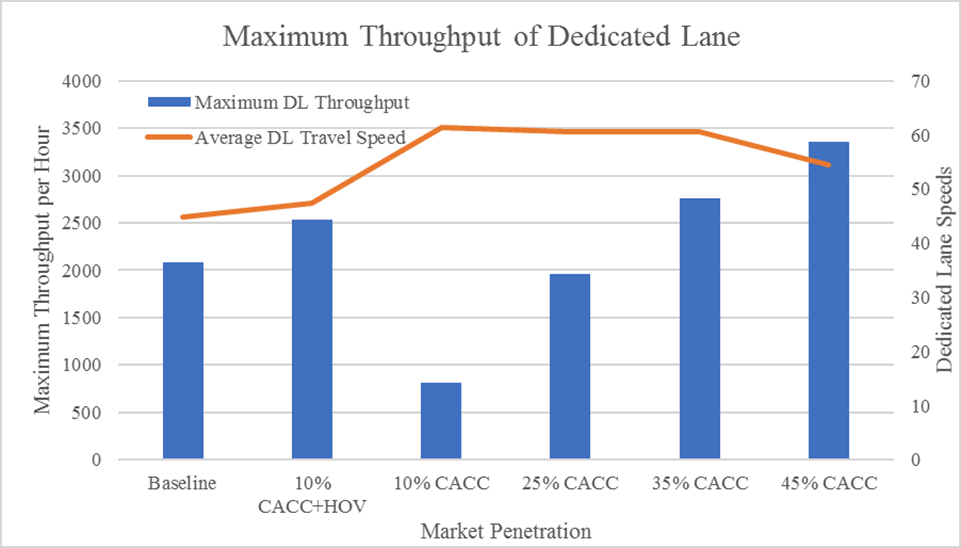This paper used a simulation based approach to assess the operational and safety impacts of CACC and DSH applications on a dedicated lane.
Virginia, United States
Dedicating Freeway Lanes for Connected and Automated Vehicle for Priority or Exclusive Use
Summary Information
The primary goal of the research was to examine the system-wide impacts of early-deployment Cooperative Adaptive Cruise Control (CACC) dedicated lane strategies on roadway performance based on a variety of external factors such as overall demand, market penetration of the equipped vehicles, dedicated lane use strategy and CACC operational parameters such as inter-vehicle headway, critical gap for leading and following vehicles, and critical speed differential for leading and following vehicles.
CACC technology uses a combination of sensors and vehicle-to-vehicle and infrastructure-to-vehicle communications to enable vehicles to automatically adjust their speed to the speed of a preceding vehicles in the same lane. Dynamic Speed Harmonization (DSH) systems, typically controlled by management centers, dynamically adjust vehicle speeds in response to downstream congestion in an effort to improve throughput and reduce congestion shockwaves that can contribute to secondary crashes.
METHODOLOGY
A simulation based approach was used to assess the operational and safety impacts of CACC and DSH at different levels of market penetration. The simulation test bed represented a 13-mile section of I-66 in Northern Virginia. The facility included one peak-hour peak-direction HOV 2+ lane, two to three general purpose lanes, and a shoulder lane made available during peak periods.
The simulation used a modified Intelligent Driver Model (IDM) enhanced with lane-change logic to assess the impacts of a CACC dedicated lane on traffic flow. DSH impacts were assessed using simulation software (VISSIM).
FINDINGS
The figure below extracted from the source document shows a comparison of the maximum dedicated lane throughput achieved through CACC implementation at different levels of market penetration.
- At 10 percent market penetration, sharing dedicated lanes with HOV improved vehicle throughput up to 21 percent, whereas not sharing with HOVs decreased throughput by almost 60 percent (primarily because fewer vehicles were allowed on dedicated lanes).
- When not shared with HOVs, CACC dedicated lane throughput increased as market penetration goes up. At 25 percent, there was a marginal reduction in throughput compared to the baseline, whereas at 35 and 45 percent, the throughput increased by up to 32 and 60 percent, respectively.

